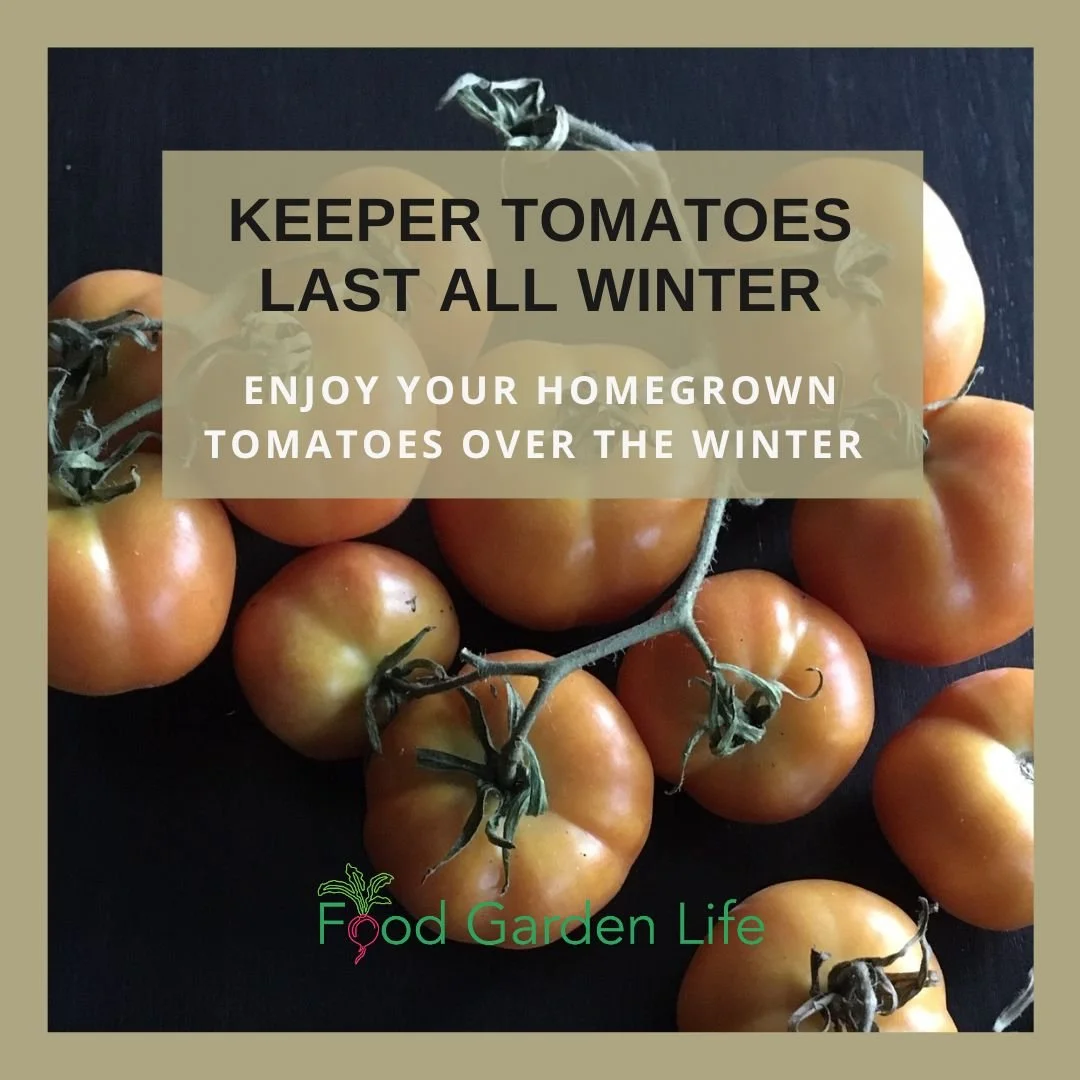Fresh Tomatoes in March
By Steven Biggs
Keeper Tomatoes Last all Winter
IT’S MARCH. Last week I used up the last of my fresh tomatoes—tomatoes that I picked last October, just before the first fall frost.
The “keeper” tomatoes have been sitting on a tray in my basement storage room all winter, hence the name.
What They’re Not
Let’s be clear: this is NOT a thin-skinned, juicy tomato. It’s a thick-skinned, “keeper” tomato.
I once gave plants to my neighbours Joe and Gina. They hated them. They loved juicy tomatoes for sandwiches and meaty tomatoes for sauces.
What They’re Good For
Keeper, or “winter,” tomatoes are perfect for chopping up to use on salads and in cooking.
My favourite way to use them is in bruschetta.
Tomatoes in March. Grow a “keeper” or “winter” tomato.
My Favourite Keeper Variety
The variety I grow came from my Dad’s friend Dino years ago. Dino simply called it a “winter tomato.” So I just call it Dino’s Winter Tomato.
When it’s ripe, the skin has an orange colour; and when you cut into it, the flesh has a light red colour.
There are other keeper varieties around:
My neighbour Natalie gave me a larger keeper variety a couple of years back — and it seems promising.
Prairie Garden Seeds sells one called Clare’s Tomato
No Need to Start Early
Because I harvest my keeper tomatoes at the very end of the season, there is no point to starting them too early.
The fruit can’t compete when there are tenderer, juicy tomatoes around.
So I don’t rush to seed them in the spring. I start most tomatoes starting 8-10 weeks before the last frost. The winter tomatoes are the last ones I get around to…sometimes 6 weeks before the last frost.
Get tips to grow great tomato seedlings at home.


